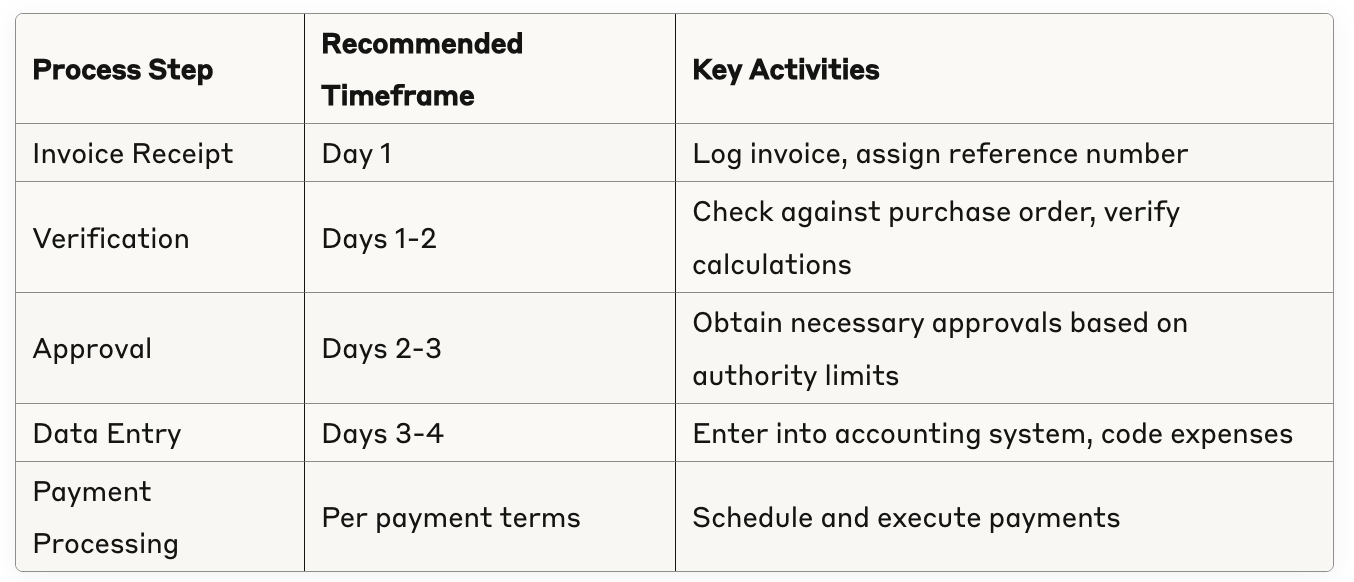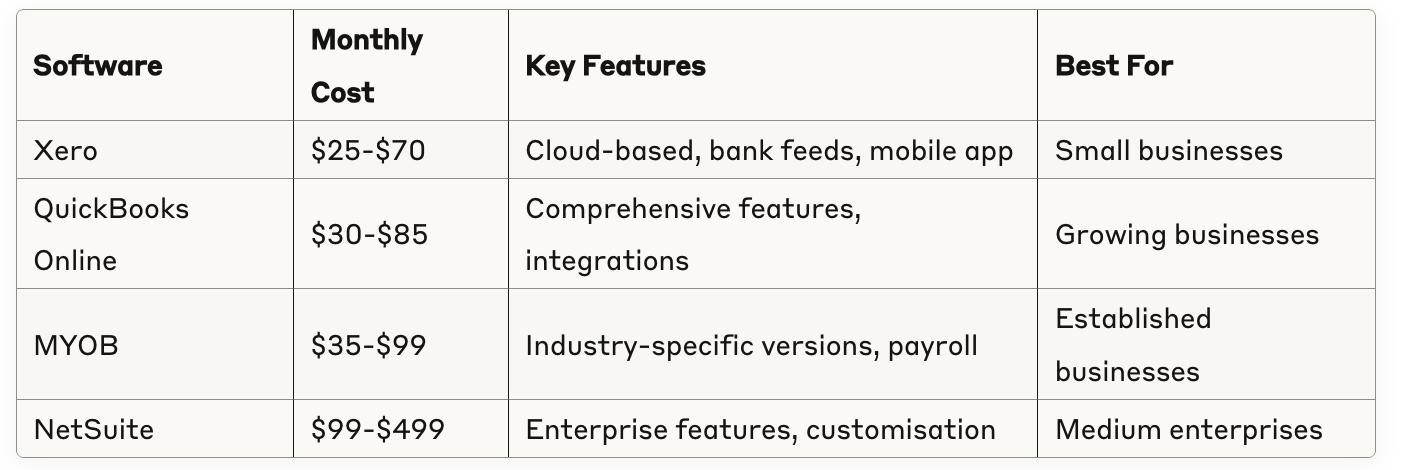
Published: June 2025
Effective accounts payable management is fundamental to the financial health and operational success of Australian small and medium enterprises. This comprehensive guide provides SME owners and financial managers with the knowledge and tools necessary to optimise their accounts payable processes, improve cash flow management, and maintain strong vendor relationships while ensuring compliance with Australian accounting standards and tax obligations.
Accounts payable represents the money your business owes to suppliers, vendors, and creditors for goods and services received but not yet paid for. It's a critical component of working capital management that directly impacts cash flow, supplier relationships, and overall business operations.
For Australian SMEs, accounts payable typically represents 15-25% of total liabilities, making it a significant factor in financial planning and cash flow management. The average Australian SME processes between 50-200 supplier invoices monthly, with payment terms ranging from 14 to 60 days depending on industry and supplier relationships.
The accounts payable process begins with invoice receipt from suppliers. Modern SMEs receive invoices through various channels including email, postal mail, electronic data interchange (EDI), and supplier portals. The Australian Taxation Office requires that tax invoices contain specific information including:
Invoice Processing Timeline:

Implementing a three-way matching process ensures accuracy and prevents fraudulent payments. This process involves matching:
Three-Way Match Tolerance Guidelines:

Properly structuring your chart of accounts is essential for effective accounts payable management. Australian SMEs should establish clear account codes that align with Australian Accounting Standards and facilitate accurate financial reporting.
Sample Accounts Payable Chart Structure:

Maintaining accurate vendor information is crucial for efficient processing and compliance. Each vendor record should include:
Australian businesses commonly use various payment terms that affect cash flow timing:
Standard Payment Terms:

Many suppliers offer early payment discounts that can provide significant cost savings. The annualised cost of not taking early payment discounts can be substantial.
Early Payment Discount Calculation:

This calculation shows that not taking a 2/10 Net 30 discount equates to paying 37.2% annual interest, making it advantageous to take the discount even if borrowing is required.
Choosing appropriate accounting software is crucial for efficient accounts payable management. Popular options for Australian SMEs include:
Accounting Software Comparison:

Automation can significantly improve accounts payable efficiency and accuracy:
Automation Benefits:

Electronic payment systems offer numerous advantages over traditional cheque payments:
Payment Method Comparison:

SMEs must ensure their accounts payable processes comply with ATO requirements:
GST Compliance:
Use our free GST calculator here
Payroll Tax Obligations:
The ATO requires businesses to maintain comprehensive records of all transactions:
Required Documentation:

Strategic payment scheduling can optimise cash flow while maintaining good supplier relationships:
Payment Schedule Optimisation:

Monitoring DPO helps assess payment efficiency and cash flow management:


Establishing clear communication protocols with vendors improves relationships and reduces disputes:
Communication Framework:

Having a structured approach to resolving disputes minimises disruption and maintains relationships:
Monitoring these KPIs helps assess accounts payable performance:
Essential KPIs:

Regular reporting provides insights into performance and identifies improvement opportunities:
Monthly Report Components:

Implementing strong internal controls helps prevent fraud and errors:
Internal Control Framework:

Maintaining proper documentation and processes facilitates smooth audits:
Audit Readiness Checklist:
AI-powered solutions are revolutionising accounts payable processing:
AI Applications:

Cloud technology offers scalability and accessibility for growing SMEs:
Cloud Solution Benefits:
Establishing standardised processes ensures consistency and efficiency:
Standard Operating Procedures Should Include:
Regular process review and improvement drives efficiency gains:
Improvement Methodology:
Effective accounts payable management is essential for Australian SME success, directly impacting cash flow, supplier relationships, and operational efficiency. By implementing the strategies and best practices outlined in this guide, SMEs can optimise their accounts payable processes, reduce costs, and support business growth.
The key to success lies in balancing efficiency with accuracy, leveraging technology while maintaining strong vendor relationships, and ensuring compliance with Australian regulatory requirements. Regular monitoring and continuous improvement will help SMEs adapt to changing business needs and maintain competitive advantage.
Q: What are the standard payment terms for Australian businesses?A: Standard payment terms in Australia typically range from Net 14 to Net 60 days, with Net 30 being the most common. Many suppliers offer early payment discounts such as 2/10 Net 30, providing 2% discount if paid within 10 days.
Q: How can SMEs take advantage of early payment discounts?A: SMEs should calculate the annualised cost of not taking discounts. For example, a 2/10 Net 30 discount has an annualised cost of 37.2% if not taken, making it beneficial to take the discount even if borrowing is required.
Q: What accounting software is best for accounts payable management?A: Popular options include Xero ($25-$70/month), QuickBooks Online ($30-$85/month), and MYOB ($35-$99/month). The choice depends on business size, complexity, and specific requirements.
Q: How long should accounts payable records be retained?A: The ATO requires businesses to retain accounts payable records for 5 years. This includes tax invoices, payment records, contracts, and bank statements.
Q: What is a good Days Payable Outstanding (DPO) benchmark?A: DPO varies by industry: Retail (25-35 days), Manufacturing (35-45 days), Professional Services (20-30 days), and Construction (40-60 days). Monitor your DPO against industry benchmarks.
Q: How can automation improve accounts payable efficiency?A: Automation can reduce invoice processing time by 90%+, approval routing by 80%+, and payment processing by 85%+. Consider automated data entry, approval workflows, and electronic payments.
Q: What internal controls should SMEs implement?A: Key controls include segregation of duties, authorisation limits, regular reconciliation, and vendor verification. These controls help prevent fraud and ensure accuracy.
Q: How often should accounts payable performance be reviewed?A: Monthly reviews are recommended, focusing on processing volume, aging analysis, vendor performance, and exception reports. This enables timely identification of issues and improvement opportunities.
Scale Suite delivers embedded finance and human resource services for ambitious Australian businesses.Our Sydney-based team integrates with your daily operations through a shared platform, working like part of your internal staff but with senior-level expertise. From complete bookkeeping to strategic CFO insights, we deliver better outcomes than a single hire - without the recruitment risk, training time, or full-time salary commitment.
Considering hiring finance staff?
We’ll show you the full cost of an internal hire vs our embedded team – and exactly how much you’d save.
We’ll reply within 24 hours to book your free 30-minute call. No lock-in contracts and 30-day money-back guarantee



